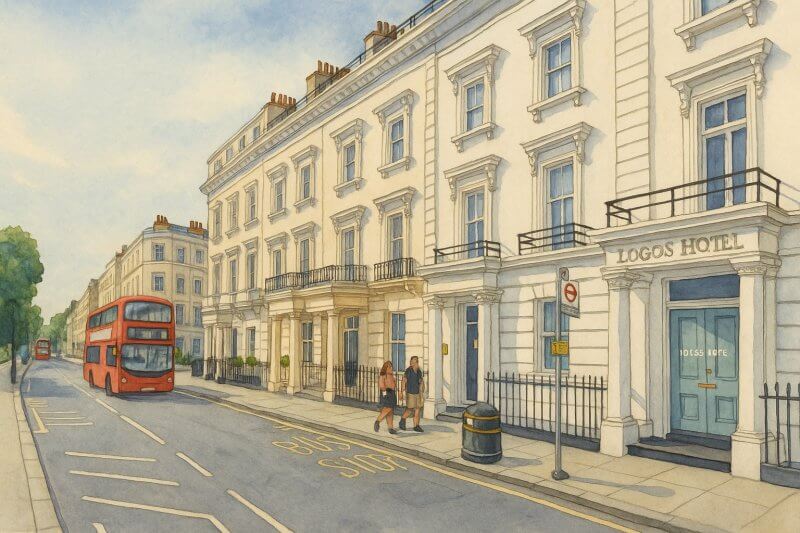
Pimlico, London
Pimlico, London: A Peaceful Riverside Neighbourhood with Elegant Charm
Discover the Peaceful Heart of Central London
Tucked between the River Thames and bustling areas like Victoria, Pimlico offers a calm and elegant escape in Central London. Known for its grand white stucco houses and garden squares, Pimlico feels like a hidden village within the heart of the city.Where is Pimlico?
Pimlico is located in the City of Westminster, just south of Victoria and north of the River Thames. It’s bordered by Chelsea to the west and Westminster to the east.On the map displayed, Pimlico is divided into two sections:
- North Pimlico - the area closer to Victoria Station, where you'll find more shopping streets and some busier roads.
- South Pimlico - a quieter, mainly residential zone closer to the River Thames, with beautiful garden squares like Warwick Square and St George’s Square.
How big is Pimlico and what is its Population?
Pimlico covers about 1.3 square kilometres (roughly 0.5 square miles). As of the latest estimates, the population of Pimlico is around 24,000 residents. The area has a relatively dense urban feel but maintains a strong sense of community thanks to its well-planned layout and abundance of green spaces.Map of Pimlico, London
Major Roads in Pimlico
Several important roads frame and cross through Pimlico:- Lupus Street – one of the main east-west routes running through the heart of Pimlico.
- Belgrave Road – a major north-south road lined with hotels and connecting Pimlico to Victoria.
- Vauxhall Bridge Road – running along the eastern edge, linking Westminster to Vauxhall across the Thames.
- Grosvenor Road – the riverside route along the Thames, offering beautiful views toward Battersea.
The History of Pimlico
The name "Pimlico" is thought to date back to the early 17th century, although its origins are still debated. One theory links it to a popular 17th-century publican named Ben Pimlico, who was famous for his ale.Pimlico as we know it today was mainly developed in the early 19th century by Thomas Cubitt, a master builder who transformed what was once marshland into a carefully planned residential area. Construction began around 1825 and continued through the Victorian era.
Pimlico's elegant stucco terraces and garden squares are a lasting legacy of Cubitt’s vision.
Demographics of Pimlico
Pimlico is known for its diverse and cosmopolitan population. Residents include a mix of:- Longtime locals who have lived there for decades
- Young professionals attracted by its central location
- Families enjoying the area's peaceful atmosphere
- Diplomats and international residents, given its proximity to government offices

Painting of Pimlico (View full-size image here)
Real Estate Prices in Pimlico
As of 2025, the average property price in Pimlico is about £950,000. This is relatively affordable compared to neighbouring Belgravia or Chelsea, where average prices easily top £2 million.For around £950,000 in Pimlico, you could expect to find a two-bedroom flat measuring about 800–900 square feet, often within a classic period conversion or a mansion block.
Rental prices are similarly moderate compared to nearby areas, making Pimlico a popular choice for renters seeking central London living without Belgravia prices.
Important Buildings and Landmarks in Pimlico
Pimlico may be primarily residential, but it has several notable landmarks:- Tate Britain – one of London’s premier art galleries, located on Millbank, just on Pimlico's edge.
- St George’s Square – one of the largest and most beautiful garden squares, with elegant townhouses around it.
- Pimlico Gardens – a small but charming park along the Thames, home to a statue of William Huskisson.
- St Saviour’s Church – a beautiful 19th-century church designed by Thomas Cundy the Younger.
Characteristics of Pimlico
Pimlico has a distinct character compared to other parts of Westminster:- Tranquil atmosphere – despite being in Zone 1, the area feels much quieter and more residential.
- Elegant architecture – tall white stucco buildings and well-maintained terraces define the look of the neighbourhood.
- Strong community feel – local groups and associations help maintain the gardens and public spaces.
- Riverside charm – proximity to the Thames offers beautiful walks and scenic spots.
Nearest London Underground Stations and Lines
Pimlico is well connected by public transport:- Pimlico Station – served by the Victoria Line, providing quick access to Victoria, Oxford Circus, and King’s Cross.
- Victoria Station – a major interchange served by the Victoria, Circle, and District Lines, as well as mainline trains and coaches.
Fun Facts About Pimlico
Here are a few fun tidbits you might not know:- The Tate Britain houses one of the largest collections of works by J.M.W. Turner, one of Britain’s most famous artists.
- Pimlico was once called "Southern Belgravia" because of its grand architecture, though it developed a more low-key reputation over time.
- Pimlico has its own climate station (located at Victoria) that contributes to official weather reports for London.